Beautiful Europe_Part # 1 of 2.
.gif)
.gif)
-Stone & Charden - L'Avventura. 1971
-VIDEO :Lãng Du - L'Avventura
Europe
Europe is, by convention, one of the world's seven continents. Comprising the westernmost peninsula of Eurasia, Europe is generally divided from Asia by the watershed divides of the Ural and Caucasus Mountains, the Ural River, the Caspian and Black Seas, and the waterways connecting the Black and Aegean Seas.
Europe is bordered by the Arctic Ocean to the north, the Atlantic Ocean to the west, the Mediterranean Sea to the south, and the Black Sea and connected waterways to the southeast. Yet the borders of Europe—a concept dating back to classical antiquity—are somewhat arbitrary, as the primarily physiographic term "continent" can incorporate cultural and political elements.
Europe is the world's second-smallest continent by surface area, covering about 10,180,000 square kilometres (3,930,000 sq mi) or 2% of the Earth's surface and about 6.8% of its land area. Of Europe's approximately 50 countries, Russia is by far the largest by both area and population, taking up 40% of the continent (although the country has territory in both Europe and Asia), while Vatican City is the smallest. Europe is the third-most populous continent after Asia and Africa, with a population of 733 million or about 11% of the world's population.
Europe, in particular Ancient Greece and Ancient Rome, is the birthplace of Western culture. It played a predominant role in global affairs from the 15th century onwards, especially after the beginning of colonialism. Between the 16th and 20th centuries, European nations controlled at various times the Americas, most of Africa, Oceania, and large portions of Asia. The Industrial Revolution, which began in Great Britain around the end of the 18th century, gave rise to radical economic, cultural, and social change in Western Europe, and eventually the wider world. Demographic growth meant that, by 1900, Europe's share of the world's population was 25%.
Both World Wars were largely focused upon Europe, greatly contributing to a decline in Western European dominance in world affairs by the mid-20th century as the United States and Soviet Union took prominence. During the Cold War, Europe was divided along the Iron Curtain between NATO in the west and the Warsaw Pact in the east. European integration led to the formation of the Council of Europe and the European Union in Western Europe, both of which have been expanding eastward since the revolutions of 1989 and the fall of the Soviet Union in 1991.
-Clickable to Map of Countries in : Europe Map
-VIDEO :Rick Steves' Europe - Travel Guide - Full Episodes and Specials _113 videos.
-VIDEO : Europe -Travel Video Guide_(746 videos)
-2009_Our signature tour to seven of Europe’s most popular countries :
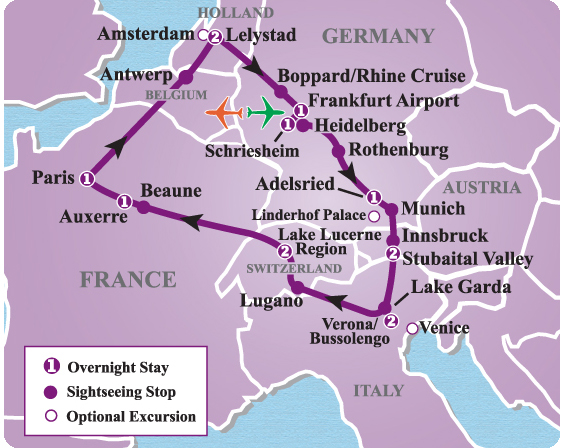
-VIDEO : Popular Videos - Bavaria & Germany_200 videos

Linderhof Palace (German: Schloss Linderhof) is in Germany, in southwest Bavaria near Ettal Abbey. It is the smallest of the three palaces built by King Ludwig II of Bavaria and the only one which he lived to see completed.
Although Linderhof is much smaller than Versailles, it is evident that the palace of the French Sun-King Louis XIV (who was an idol for Ludwig) was its inspiration. The staircase, for example, is a reduction of the famous Ambassador's staircase in Versailles, which would be copied in full in Herrenchiemsee. Stylistically, however, the building and its decor take their cues from the mid-18th century Rococo ofLouis XV, and the small palace in the Graswang was more directly based on that king's Petit Trianon on the Versailles grounds. The symbol of the sun that can be found everywhere in the decoration of the rooms represents the French notion of absolutism that, for Ludwig, was the perfect incorporation of his ideal of a God-given monarchy with total royal power. Such a monarchy could no longer be realised in Europe in the second half of the nineteenth century. The bedroom was important to the ceremonial life of an absolute monarch; Louis XIV of France used to give his first (lever) and last audience (coucher) of the day in his bedchamber. In imitation of Versailles, the bedroom is the largest chamber of Linderhof Palace. By facing north, however, the Linderhof bedroom inverts the symbolism of its Versailles counterpart, showing Ludwig's self-image as a "Night-King."
The location of the palace near Ettal Abbey again presents another interesting point. Because of its architecture Ludwig saw the church of the monastery as the room where the holy grail was preserved. This fact connects the idea of a baroque palace to the one of a "medieval" castle such as Neuschwanstein and reminds of the operas of Richard Wagner whose patron Ludwig was.
Ludwig II's coronation portrait, 1865
-Beautiful Bavaria-Ettal, Schloss --Linderhof, Oberammergau, Garmisch-Partenkirchen HD:
PHOTO SPHERE - May 2016:
Linderhof Castle_Ger


Ludwig's dining room at Linderhof


Linderhof-sculpture


Linderhof-sculpture


.jpg)






Linderhof-chamber
Mad King Ludwig's bed is about 6½ feet long and more than 8 feet wide and is draped in blue velvet. Ludwig II is said to have slept with 108 burning candles around his bead.


Some paintings seem to pop off the walls at the Linderhof palace. This one, of Flora, the Roman goddess of flowers, graces the domed ceiling above the dining area of King Ludwig II’s Linderhof palace. The artist added perspectiv



Linderhof Palace. Audience Room











Audience Chamber ~ Linderhof Palace

-VIDEO : Schloss Linderhof - Linderhof Palace :

Cupid fountain near the Linderhof Palace



The Moorish kiosk

Lavish interior of the Moorish Kiosk, Linderhof Palace

The Moorish kiosk


.jpg)





The fountains at King Ludwig II's Linderhof Palace.


_2009_05_29

The largest national economy in Europe, Germany is a federal parliamentary republic located in western-central part of the continent. It is officially known as the Federal Republic of Germany and has a population of 80.9million.
-VIDEO :King Ludwig 2: The 'Fairy-tale' Monarch & his Castles_King Ludwig the Second (1845-1886) was known as the 'Mad Monarch of Bavaria' but left in his passing a series of fantastic castles that are visited by over 3 million people a year and recognized the world over. This is the unusual story of an ill-fated King and his tragic end, his strange relationship to the composer Richard Wagner and a first-hand visit to his famous creations. I also hoped to illustrate how the lush musical selections of Wagner conveying the beauty of the Bavarian mountains and countryside helped to shape the majestic fantasies of King Ludwig. Hosted by Munich's own Octoberfest Queen, Ms. Brigitte Viez with observations, video and photography by Bruce Blank and Charlene Henning.

Virtual Tour over Neuschwanstein Castle, Germany • 360° Aerial Panorama

This beautiful castle looks like something out of a fairy-tale, right? It's Neuschwanstein, the Bavarian castle that gave Walt Disney the inspiration to create his Magic Kingdom castle.
-Schloß Neuschwanstein_PHOTO SPHERE - Aug 2015:
Neuschwans
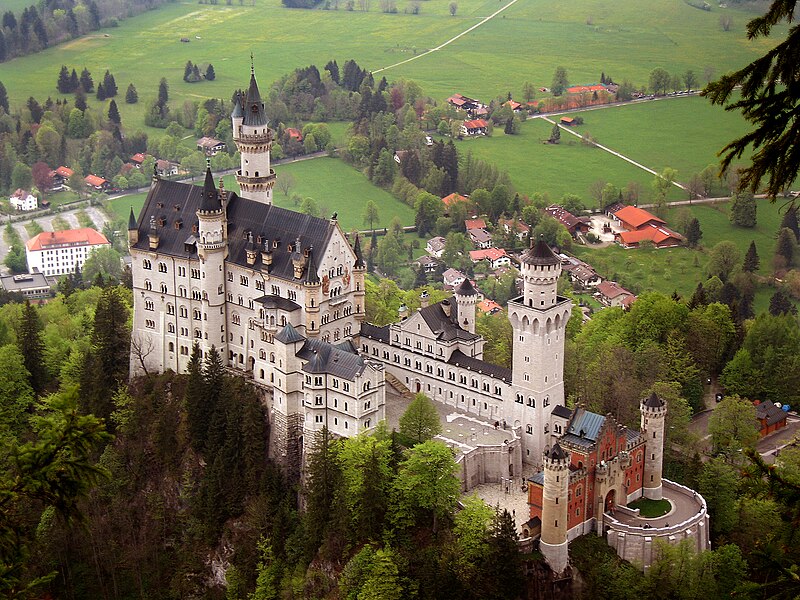

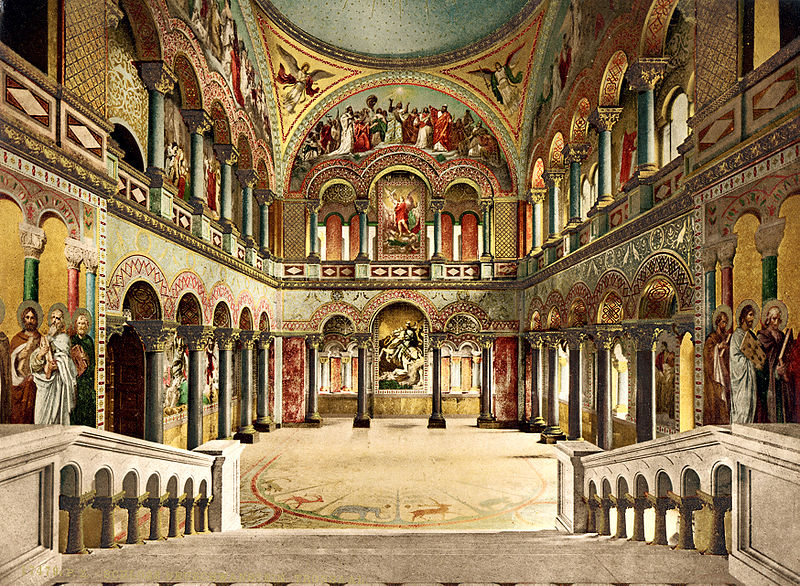
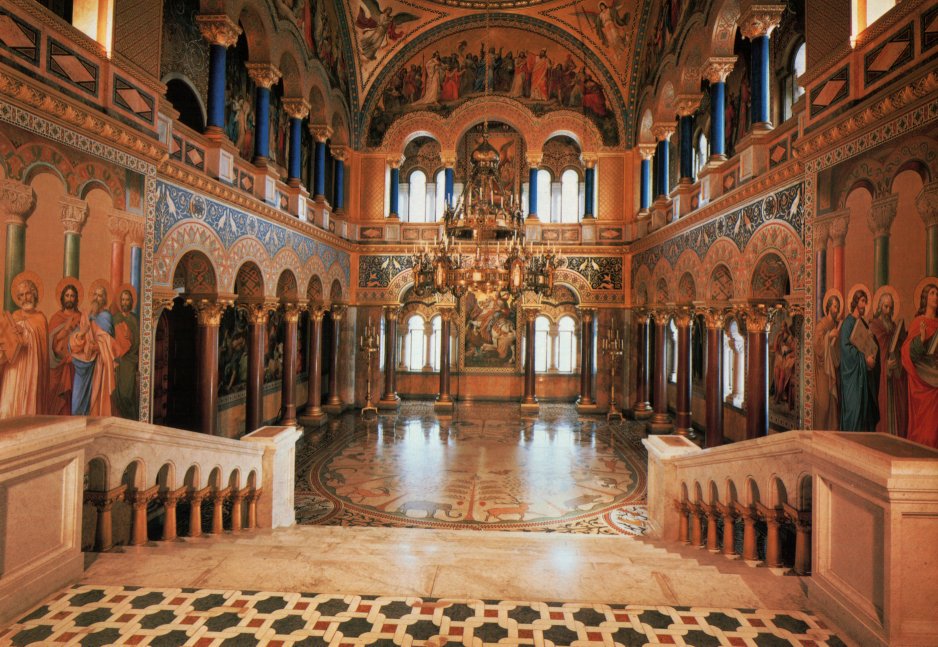








Neuschwanstein castle
View from south-east, Palas on the left-VIDEO :Neuschwanstein Castle Documentary

Neuschwanstein singer's hall

Neuschwanstein throne room


Throne Hall




Thronsaal in Schloss Neuschwanstein.




Thronsaal in Schloss Neuschwanstein.

Study room



Throne Hall detail



Drawing room


Bedroom
-Neuschwanstein and Hohenschwangau Castles_ 4K Video-Best of Europe_2017:

Neuschwanstein Castle as seen from Marienbrücke (Marie's Bridge, or Pöllatbrücke). Marienbrücke is across the Pöllat directly behind and directly visible from Neuschwanstein Castle. The bridge was named by Ludwig II of Bavaria after his mother, Marie Friederike of Prussia

-Oberammergau, Bavaria, Germany
_2009_05_29

The Pilgrimage Church of Wies (German: Wieskirche) is an oval rococo church, designed in the late 1740s by Dominikus Zimmermann, who for the last eleven years of his life lived nearby. It is located in the foothills of the Alps, in the municipality ofSteingaden in the Weilheim-Schongau district, Bavaria, Germany.
It is said that, in 1738, tears were seen on a dilapidated wooden figure of the Scourged Saviour. This miracle resulted in a pilgrimage rush to see the sculpture. In 1740, a small chapel was built to house the statue but it was soon realized that the building would be too small for the number of pilgrims it attracted, and so Steingaden Abbey decided to commission a separate shrine. Many who have prayed in front of the statue of Jesus on the altar have claimed that people have been miraculously cured of their diseases, which has made this church even more of a pilgrimage site.
Construction took place between 1745 and 1754, and the interior was decorated with frescoes and with stuccowork in the tradition of the Wessobrunner School. "Everything was done throughout the church to make the supernatural visible. Sculpture and murals combined to unleash the divine in visible form".
There is a popular belief that the Bavarian government planned to sell or demolish the rococo masterpiece during the secularization of Bavaria at the beginning of the 19th century, and that only protests from the local farmers saved it from destruction. Available sources, however, document that the responsible state commission clearly advocated the continuation of Wies as a pilgrimage site, even in spite of economic objections from the abbot of Steingaden.
The Wieskirche was added to the UNESCO World Heritage List in 1983 and underwent extensive restoration between 1985 and 1991.










The Wieskirche is a beautiful Bavarian rococo church in southern Germany,de
-The Wieskirche_ SPHERE - Jun 2016:
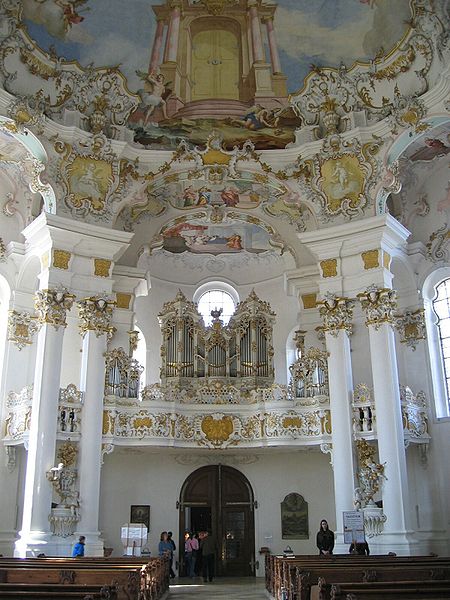
Pilgrimage Church of the Scourged Saviour (German: Wieskirche) it is an oval rococo church, designed in the late 1740s by Dominikus Zimmermann
-VIEW :Fussen Germany
-VIDEO :Germany from Above - Spectacular Route from Lindau to Berchtesgaden (HD)
- History of Germany - Documentary :
-2009_05_28_Innsbruck_Austrian Tyrol :
-Innsbruck (German: [ˈɪnsbʀʊk] ins-brook, dialectal: [ˈɪnʃpʀʊk] insh-prook) is thecapital city of the federal state of Tyrol (Tirol) in western Austria. It is located in the Inn Valley at the junction with the Wipptal (Sill River), which provides access to the Brenner Pass, some 30 km (18.6 mi) south of Innsbruck. It is about half way between Munich (Germany) and Verona (Italy). Located in the broad valley between high mountains, the Nordkette (Hafelekar, 2,334 metres or 7,657 feet) in the north, Patscherkofel (2,246 m or 7,369 ft) and Serles(2,718 m or 8,917 ft) in the south. It is an internationally renowned winter sports centre, and hosted the 1964 and 1976 Winter Olympics as well as the 1984 and 1988 Winter Paralympics. Innsbruck also hosted the first Winter Youth Olympics in 2012. The word bruck comes from the same root as the modern German word "Brücke" meaning "bridge" which leads to "the bridge over the Inn".
-VIDEO : INNSBRUCK Capitale delle Alpi - HD
-VIDEO :Bavaria Vacation Travel Video Guide • Great Destinations
-Maria Theresa StreetOne of the busiest streets in the city of Innsbruck and certainly worth a visit is Maria Theresa Street (German: Maria-Theresien-Strasse). Named for Empress Maria Theresa, this bustling street is home to a number of shops and stretches from the Triumphal Arch to the Old Town (Altstadt). During the summer of 2009, a section of the street was renovated completely and designed to reflect a pedestrian street concept. The north end of the street is today fully-pedestrianized.
More than 700 years ago, this street was comprised of only a few farmhouses. The Old Town remained enclosed by a circular wall that was well fortified and could only be entered through the St. Jörgen gateway. Before long, the aristocracy began to construct homes along this street in the New Town. Many such homes were remodeled during the Baroque period and become opulent palaces.
There are also many other impressive monuments that allude to the history of Innsbruck along this street, including St. Anne’s Column, the Triumphal Arch, and the Chapel of St. George. Combined with an array of outdoor restaurants, cafes, boutiques and shops, Maria-Theresien-Strasse is the ideal place to shop, stroll, sight see and soak up the history of Innsbruck.
-VIDEO :Tyrol Vacation Travel Video Guide_2014
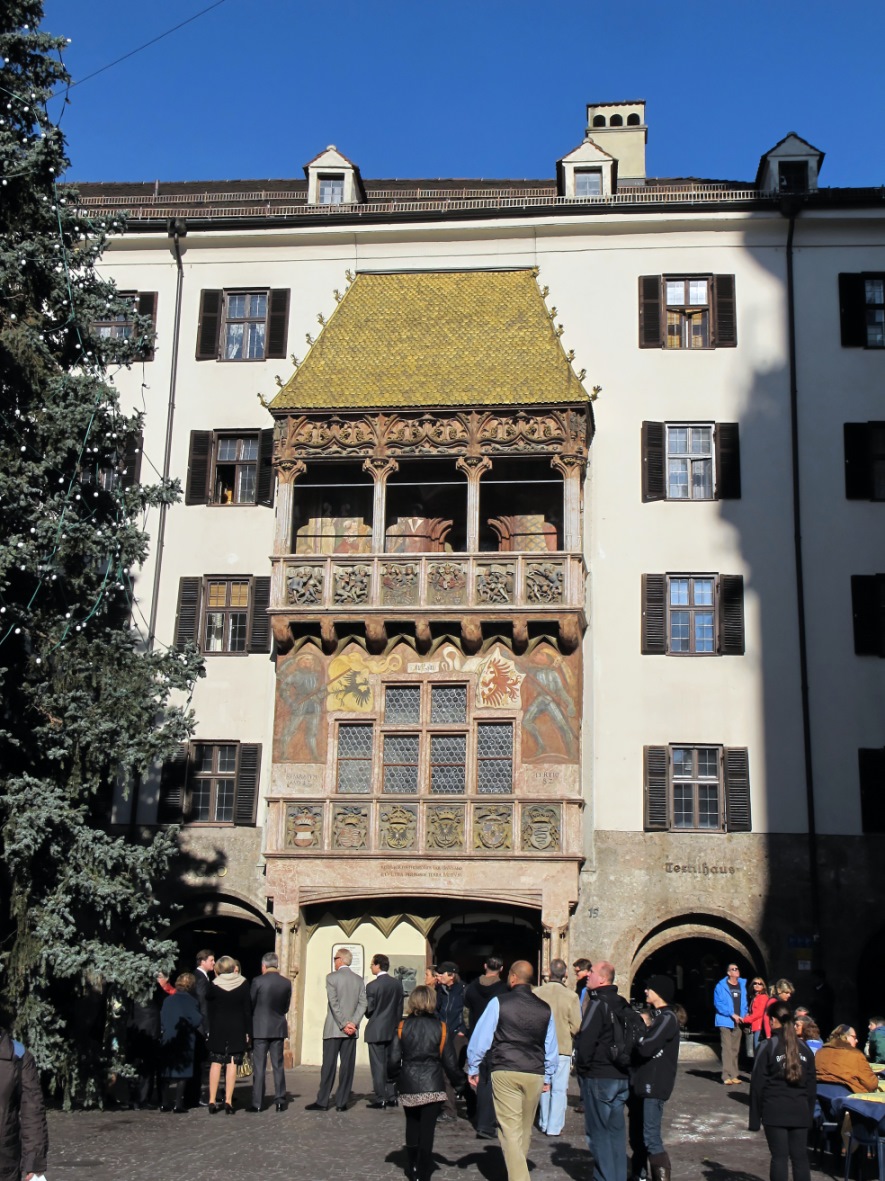
The Goldenes Dachl (Golden Roof) is a landmark structure located in the Old Town (Altstadt) section of Innsbruck, Austria. It is considered the city's most famous symbol. Completed in 1500, the roof was decorated with 2,738 fire-gilded copper tiles for Emperor Maximilian I to mark his wedding to Bianca Maria Sforza.[ The Emperor and his wife used the balcony to observe festivals, tournaments, and other events that took place in the square below.
-TIROL. AUSTRIA 4K (UHD)_2017:
AT THE SANDWIRT RESTAURANT._Innsbruck,

Golden Roof In Innsbruck_A

-May 29_2009 :_In Innsbruck_A

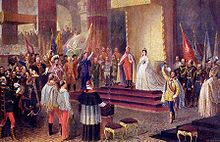 Coronation of Franz Joseph and Elisabeth as Apostolic King and Queen of Hungary
- Szalay József–Baróti Lajos: A magyar nemzet története (1895)
Coronation of Franz Joseph and Elisabeth as Apostolic King and Queen of Hungary
- Szalay József–Baróti Lajos: A magyar nemzet története (1895)
-MOVIE : Sissi (1955)_Vietsub.
(HOÀNG HẬU SISSI)
"Sissi" is the first part of a trilogy about the Austrian princess/empress Elisabeth in Bavaria, aka Sissi (Romy Schneider). The teenage princess lives happily in Bavaria with her parents, Duke Max (Gustav Knuth) and Duchess Ludovika (Magda Schneider, Romy's real life mother), and siblings. When Ludovika is invited by her sister, Archduchess Sophie (Vilma Degischer), to take Helene, Sissi's older sister, to the Austrian court in Ischl, in order to arrange a royal engagement for Helene and the young emperor Franz Joseph (Karlheinz Böhm), Sissi goes along. However, nobody could imagine that Franz would fall in love with the spontaneous, childish Sissi, instead of the sophisticated Helene.
"Sissi" is nothing more than a naïve, romantic matinée – but a very well done romantic matinée! Romy Schneider shines as the young princess, she's the heart of the movie. It's impossible not to fall in love with her gorgeous smile and sweet manners.
Schneider’s breakthrough came with her portrayal of Elisabeth, Empress Consort of Austria, in the romantic biopic Sissi (1955) and its two sequels, Sissi – The Young Empress (1956) and Sissi – Fateful Years of an Empress (1957), all with Karlheinz Böhm, who became a close friend.
Romy Schneider was only 17 when she played the title role in “Sissi”, a romantic movie about the young Bavarian princess that became the empress of Austria. The film was Schneider’s breakthrough — it turned the Austrian-born actress into an instant 1950s film diva.
She didn’t want to be a princess all her life. “Yes, I loved this role back then,” Schneider said. “I was the princess, not just in front of the camera. I was always a princess. But one day I simply did not want to be a princess anymore.”
Despite the success, Schneider was desperate to get away from the naive and innocent characters that she was made to play in post-war Germany. “Sissi sticks to me like oatmeal,” she said. [via wikipedia and problogs.com]
Romy Schneider was only 17 when she played the title role in “Sissi”, a romantic movie about the young Bavarian princess that became the empress of Austria. The film was Schneider’s breakthrough — it turned the Austrian-born actress into an instant 1950s film diva.
She didn’t want to be a princess all her life. “Yes, I loved this role back then,” Schneider said. “I was the princess, not just in front of the camera. I was always a princess. But one day I simply did not want to be a princess anymore.”
.gif&container=blogger&gadget=a&rewriteMime=image%2F*)

Tableau de Georges Garen peint en 1889 intitulé « Embrasement de la Tour Eiffel pendant l’Exposition universelle de 1889.

The Arc de Triomphe du Carrousel is a triumphal arch in Paris, located in the Place du Carrousel on the site of the former Tuileries Palace. It was built between 1806 and 1808 to commemorate Napoleon's military victories of the previous year. The more famous Arc de Triomphe de l'Étoile nearby was designed in the same year, but it took thirty years to build and is about twice the size.

Quadriga on the Arc de Triomphe du Carrousel, Paris: Peace riding in a triumphal chariot, by François-Joseph Bosio (1828).
Français : Quadrige de l'Arc de triomphe du Carroussel du Louvre: La Paix conduite sur un char de triomphe, par François-Joseph Bosio



"The City of Light"or "La ville lumière"


.
2009_06_03_Beaune_France:
Beaune is the wine capital of Burgundy in the Côte d'Or department in eastern France. It is located between Paris and Geneva.Beaune is one of the key wine centres in France and the annual wine auction of the Hospices de Beaune is the primary wine auction in France. The town is surrounded by some of the world's most famous wine villages, while the facilities and cellars of many producers, large and small, are situated in Beaune itself. With a rich historical and architectural heritage, Beaune is considered the "Capital of Burgundy wines".
It is an ancient and historic town on a plain by the hills of the Côte d'Or, with features remaining from the pre-Roman and Roman eras, through the medieval and renaissance periods and up to recent history and modern times.Beaune is a walled city, with about half of the battlements, ramparts, and the moat, having survived and in good condition, and the central "old town" is extensive. Historically Beaune is intimately connected with the Dukes of Burgundy.
Landmarks in Beaune include the Halles, the Hospices, the Beffroi, and Notre Dame.There is a comprehensive "traditional" shopping area clustered around the central square with a focus on gourmet food, fashion, and wine, while large supermarkets, business parks, etc., are situated on the outskirts of town.Beaune is the centre for wine industry services (such as tractors and equipment for vat-rooms) as well as a number of wine-related institutes and education facilities. The train station is served by TGV, through Dijon orLyon.
Beaune has a major fine food market on Saturdays, where there are a large number of stall holders supplying a broad selection of products and specialties from Burgundy and the surrounding regions. For example, Bresse chickens, Jura cheeses, small goods, spices, produce of every variety as well as seasonal specialties such as truffles. There is a smaller market on Wednesday, and special-event markets and fetes are held throughout the year.
Beaune is the wine capital of Burgundy in the Côte d'Or department in eastern France. It is located between Paris and Geneva.Beaune is one of the key wine centres in France and the annual wine auction of the Hospices de Beaune is the primary wine auction in France. The town is surrounded by some of the world's most famous wine villages, while the facilities and cellars of many producers, large and small, are situated in Beaune itself. With a rich historical and architectural heritage, Beaune is considered the "Capital of Burgundy wines".
It is an ancient and historic town on a plain by the hills of the Côte d'Or, with features remaining from the pre-Roman and Roman eras, through the medieval and renaissance periods and up to recent history and modern times.Beaune is a walled city, with about half of the battlements, ramparts, and the moat, having survived and in good condition, and the central "old town" is extensive. Historically Beaune is intimately connected with the Dukes of Burgundy.
Landmarks in Beaune include the Halles, the Hospices, the Beffroi, and Notre Dame.There is a comprehensive "traditional" shopping area clustered around the central square with a focus on gourmet food, fashion, and wine, while large supermarkets, business parks, etc., are situated on the outskirts of town.Beaune is the centre for wine industry services (such as tractors and equipment for vat-rooms) as well as a number of wine-related institutes and education facilities. The train station is served by TGV, through Dijon orLyon.
Beaune has a major fine food market on Saturdays, where there are a large number of stall holders supplying a broad selection of products and specialties from Burgundy and the surrounding regions. For example, Bresse chickens, Jura cheeses, small goods, spices, produce of every variety as well as seasonal specialties such as truffles. There is a smaller market on Wednesday, and special-event markets and fetes are held throughout the year.

The Hospices de Beaune or Hôtel-Dieu de Beaune is a former charitable almshouse in Beaune, France. It was founded in 1443 by Nicolas Rolin, chancellor of Burgundy, as a hospital for the poor. The original hospital building, the Hôtel-Dieu, one of the finest examples of French fifteenth-century architecture, is now a museum. Services for patients are now provided in modern hospital buildings.
An important charity wine auction is held in November each year (formerly in the great hall of the Hôtel-Dieu).

Courtyard of the Hôtel-Dieu.
Polychrome roof of the Hospices de Beaune




2009_06_03_Beaune_France
-VIDEO :Beaune France_2015
-VIDEO :Burt Wolf Three Glorious Days in Beaune France_2013
- 2009_05_28:

Old Town of Munich (Germany): on the left the Frauenkirche and on the right the New Town Hall
Munich (/ˈmjuːnɪx/; German: München, pronounced [ˈmʏnçən] (
The city's native name, München, is derived from the combined Late Latin and Old High German term ad Munichen, meaning "by the monks (' place)". It derives from the monks of the Benedictine order who ran a monastery at the place that was later to become the Old Town of Munich; hence the monk depicted on the city's coat of arms. Munich was first mentioned in 1158. From 1255 the city was seat of the Bavarian Dukes. Black and gold — the colours of the Holy Roman Empire — have been the city's official colours since the time of Ludwig the Bavarian, when it was an imperial residence. Following a final reunification of the Wittelsbachian Duchy of Bavaria, previously divided and sub-divided for more than 200 years, the town became the country's sole capital in 1506. Catholic Munich was one cultural stronghold of the Counter-Reformation and a political point of divergence during the resultingThirty Years' War, but remained physically untouched despite an occupation by the Protestant Swedes; the townsfolk would rather open the gates of their beautiful town than risk siege and almost inevitable destruction. Like wide parts of the Holy Roman Empire, the area recovered slowly economically. Having evolved from a Duchy's capital into that of an electorate (1623), and later a sovereign kingdom's (1806), Munich has been a center of arts, culture and science since the early 19th century. The city became the Nazi movement's infamous Hauptstadt der Bewegung (lit.: "Capital of the movement"), and after post-war reconstruction was the host city of the 1972 Summer Olympics.
Munich is home to many national and international authorities, major universities, major museums and theaters. Its numerous architectural attractions, international sports events, exhibitions, conferences and Oktoberfest attract considerable tourism. Since 2006, the city's motto has been "München mag dich" ("Munich loves you"). Munich is a traffic hub with excellent international, national and local connections, running a fast and reliable public transportation system. It is a center of finance, publishing and advanced technologies. Munich is one of the most prosperous and fastest growing cities in Germany, and the seat of numerous corporations and insurance companies. It is a top-ranked destination for migration and expatriate location, despite being the municipality with the highest density of population (4.500 inh. per km²) in Germany. Munich achieved fourth place in the frequently-quotedMercer livability rankings in 2011 and 2012. For economic and social innovation, the city was ranked 15th globally out of 289 cities in 2010, and 5th in Germany by the 2thinknow Innovation Cities Index based on analysis of 162 indicators. In 2013, Monocle ranked Munich as the world's most livable city with the highest quality of life.

The Nymphenburg Palace (German: Schloss Nymphenburg) is a Baroque palace in Munich, Bavaria, Germany. The palace was the summer residence of the rulers of Bavaria.(2008)

Panoramic View of Nymphenburg Palace

Nymphenburg, ca 1730.

Panoramic View of Nymphenburg Palace

Nymphenburg, ca 1730.


-VIDEO :Munich - Bavarian city with tradition | Discover Germany_2015

The New Town Hall and Marienplatz
-Munich in 4K_2016 :


Munich Marienplatz
Marienplatz (en: Mary's Square, i.e. St. Mary, Our Lady's Square) is a central square in the city centre of Munich, Germany. It has been the city's main square since 1158.
In the Middle Ages markets and tournaments were held in this city square. Marienplatz was named after the Mariensäule, a Marian column erected in its centre in 1638 to celebrate the end of Swedish occupation. Today the Marienplatz is dominated by the New City Hall (Neues Rathaus) on the north side. The Glockenspiel in the tower of the new city hall was inspired by these tournaments, and draws millions of tourists a year. At the east side Munich's Old City Hall (Altes Rathaus) is located. It's a gothic council hall and ballroom and tower, which have been reconstructed.
The pedestrian zone between Karlsplatz and Marienplatz is a crowded area with numerous shops and restaurants.
The Marienplatz S-Bahn and U-Bahn station, an important transportation hub, is located below the square.
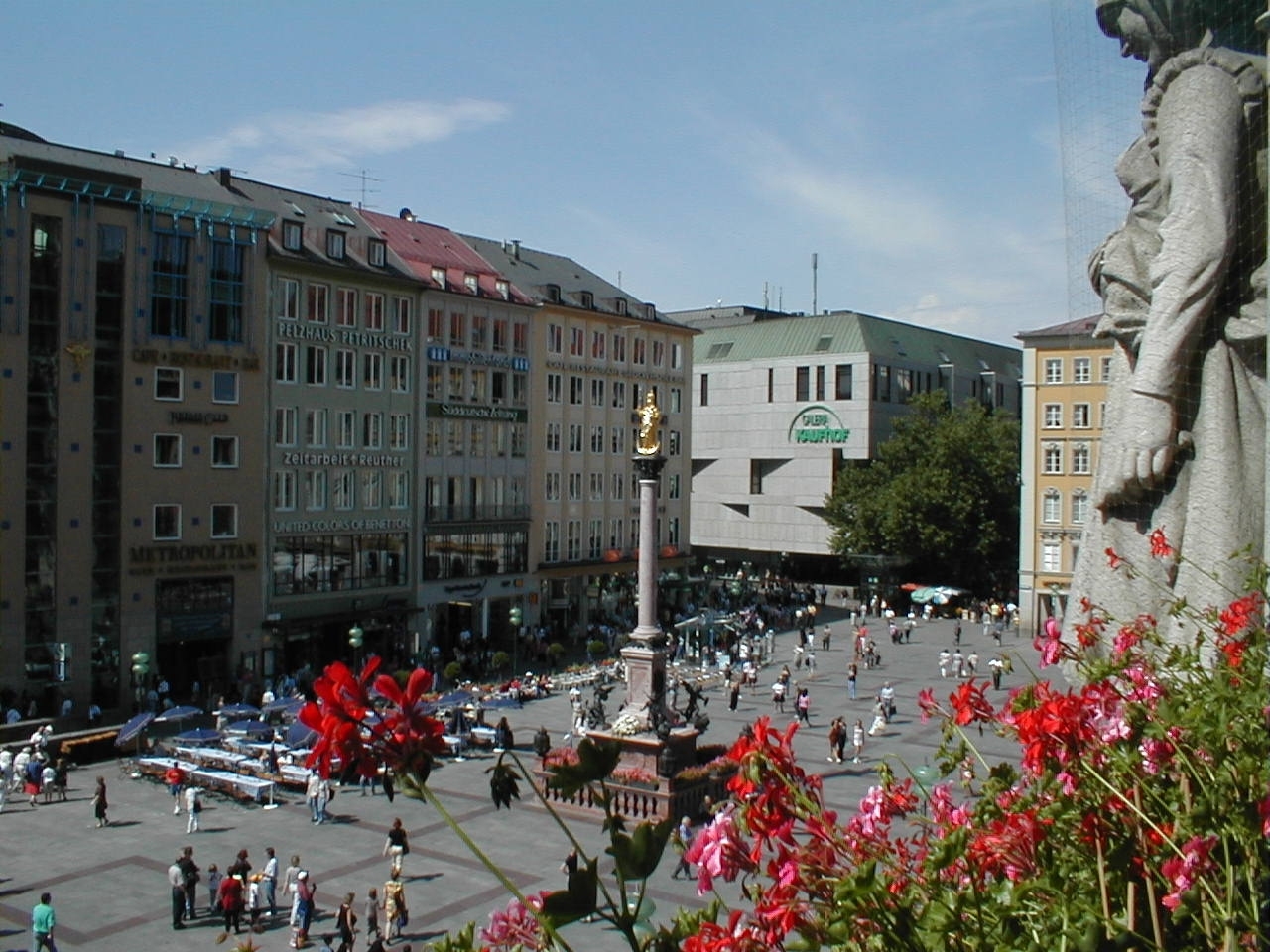
Marienplatz in Munich (Bavaria), Germany - taken from a balcony of the New Town Hall

Virgin Mary atop the Mariensäule
The Mariensäule is a Marian column located on the Marienplatz in Munich, Germany. It was erected in 1638 to celebrate the end of Swedish occupation during the Thirty Years' War and is topped by a golden statue of the Virgin Mary standing on a crescent moon as the Queen of Heaven, created in 1590. The figure was originally located in the Frauenkirche. Mariensäule in Munich was the first column of this type built north of the Alps and inspired erecting other Marian columns in this part of Europe.At each corner of the column's pedestal is a statue of a putto, created by Ferdinand Murmann. The four putti are each depicted fighting a different beast, symbolizing the city's overcoming of adversities: war represented by the lion, pestilence by the cockatrice, hunger or famine by the dragon and heresy by the serpent.
Mary Column, Munich, Germany
PHOTO SPHERE - Sep 2014:

Glockenspi



Munich, Germany
A bratwurst (German: [ˈbʁaːtvʊɐ̯st] , also known as a brat in American English, is a sausage usually composed of veal, pork or beef. The name is derived from Old High German Brätwurst, from brät-, which is finely chopped meat and Wurst, or sausage. Though the brat in bratwurst described the way the sausages are made, modern Germans associate it with the German verb “braten”, which means to pan fry or roast. Bratwurst is usually grilled or pan fried, and sometimes cooked in broth or beer

Nürnberger Bratwurst with sauerkraut and mustard, as served in the Nürnberger Bratwurst Glöckl in Munich
Every Bavarian professes a love for his or her favorite kind of wurst (a choice that's often based on childhood associations). Many visitors' favorite is Bratwurst, which came originally from nearby Nürnberg and is concocted from seasoned and spiced pork. Weisswurst, Munich's traditional accompaniment to a foaming mug of beer, wasn't "invented" until 1857, a date remembered by Münchners as an important watershed. The ingredients that go into it are less appetizing than the final result -- usually including veal, calves' brains, and spleen. Modern versions contain less offal and better quantities of veal, as well as spices and lemon juice to enhance the flavor. Two are usually considered a snack. Five or six are a respectable main course. Most aficionados try not to eat the skin, but some die-hards wouldn't think of removing it.

Traditional Weisswurst meal, served with sweet mustard (senf) and a soft pretzel.

Glockenspi




Beer Barrel Polka --Tatiana Doronina
-VIDEO :Beer barrel polka - Bobby Vinton
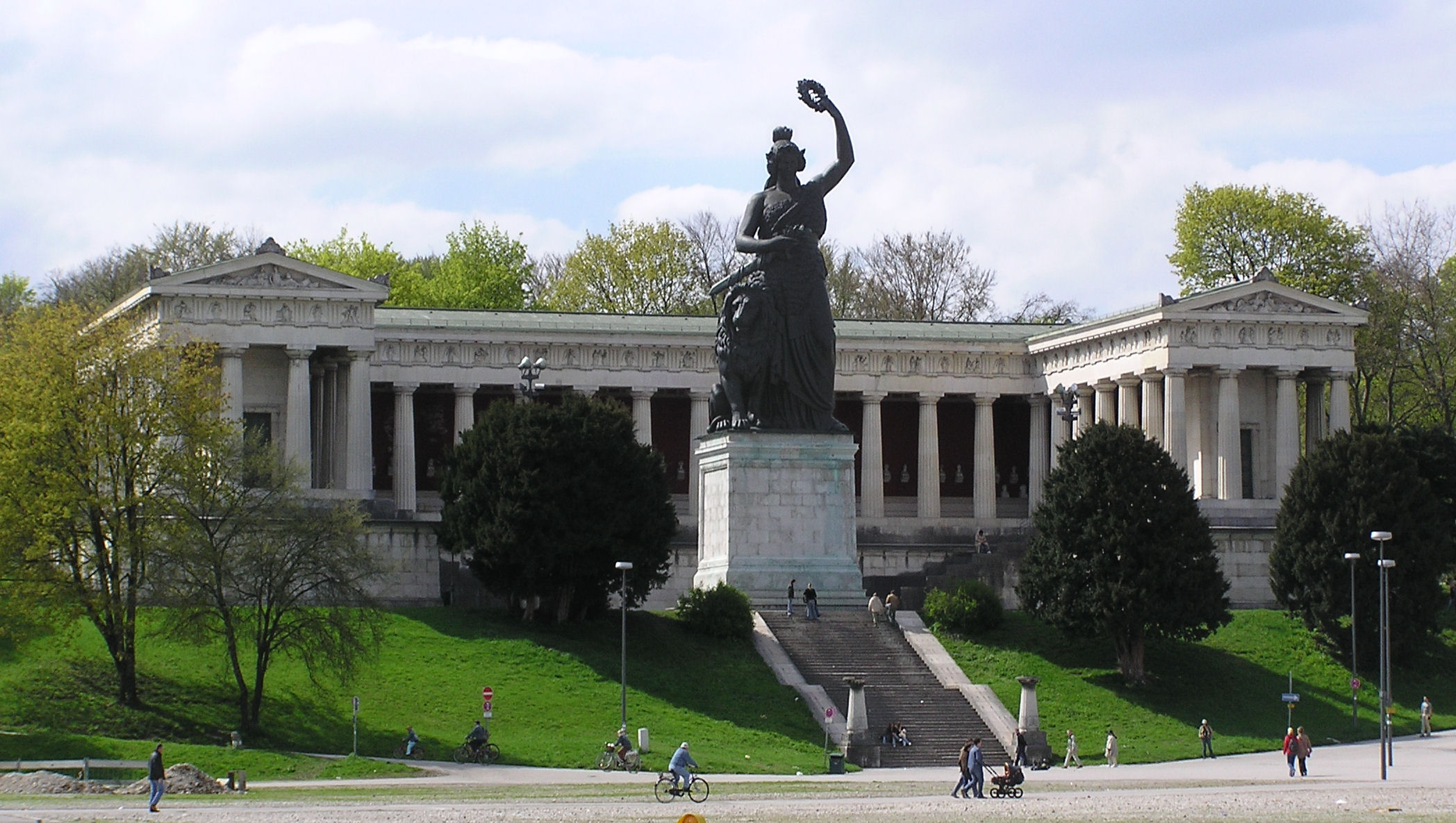
The Ruhmeshalle with the statue of Bavaria by Ludwig Schwanthaler, 2006


A waitress with Hacker-Pschorr, one of the traditional beers allowed to be served at Oktoberfest. She wears a dirndl, a traditional women's dress of Bavaria.
A bratwurst (German: [ˈbʁaːtvʊɐ̯st] , also known as a brat in American English, is a sausage usually composed of veal, pork or beef. The name is derived from Old High German Brätwurst, from brät-, which is finely chopped meat and Wurst, or sausage. Though the brat in bratwurst described the way the sausages are made, modern Germans associate it with the German verb “braten”, which means to pan fry or roast. Bratwurst is usually grilled or pan fried, and sometimes cooked in broth or beer

Nürnberger Bratwurst with sauerkraut and mustard, as served in the Nürnberger Bratwurst Glöckl in Munich
Every Bavarian professes a love for his or her favorite kind of wurst (a choice that's often based on childhood associations). Many visitors' favorite is Bratwurst, which came originally from nearby Nürnberg and is concocted from seasoned and spiced pork. Weisswurst, Munich's traditional accompaniment to a foaming mug of beer, wasn't "invented" until 1857, a date remembered by Münchners as an important watershed. The ingredients that go into it are less appetizing than the final result -- usually including veal, calves' brains, and spleen. Modern versions contain less offal and better quantities of veal, as well as spices and lemon juice to enhance the flavor. Two are usually considered a snack. Five or six are a respectable main course. Most aficionados try not to eat the skin, but some die-hards wouldn't think of removing it.

Traditional Weisswurst meal, served with sweet mustard (senf) and a soft pretzel.
A Weisswurst (German Weißwurst [ˈvaɪsvʊɐ̯st], literally white sausage; Bavarian: Weißwuascht) is a traditional Bavarian sausage made from minced veal and pork back bacon. It is usually flavoured with parsley, lemon, mace, onions,ginger, and cardamom, although there are some variations. Then the mixture is stuffed into pork casings and separated into individual sausages measuring about ten to twelve centimeters in length and about two centimeters in thickness.
As it is very perishable, Weisswürste traditionally were manufactured early in the morning and prepared and eaten as a snack between breakfast and lunch—there is a saying that the sausages should not be allowed to hear the noon chime of the church bells. Traditionally, Weisswürste may only be served until midday because preservatives are not used, the meat is not smoked, and hence the sausage is made fresh every day; indeed, they sometimes are called morning sausages. Before modern refrigeration technologies, in summertime the sausages would go bad before nightfall. Even today, most Bavarians eat Weisswürste before noon.

Glockenspi



-Berlin and Munich 1900 in colour:

Beer Barrel Polka --Tatiana Doronina
-VIDEO :Beer barrel polka - Bobby Vinton

The Ruhmeshalle with the statue of Bavaria by Ludwig Schwanthaler, 2006
The Ruhmeshalle (literally hall of fame) is a Doric colonnade with a main range and two wings, designed by Leo von Klenze for Ludwig I of Bavaria. It is situated on an ancient ledge above the Theresienwiese in Munich and was built as part of a complex which also includes the Bavariapark and the Bavaria statue. It is built of Kelheim limestone and is 68 metres long and 32 metres deep.
With the construction and exhibition of busts of important people from Bavaria, including the Palatinate, Franconia and Swabia, King Ludwig intended to create a hall of fame that honors laudable and distinguished people of his kingdom, as he did also in the Walhalla memorial for all of Germany.
Bavaria statue and lion after renovation in 2001-2002
Bavaria is the name given to a monumental, bronze sand-cast 19th-century statue in Munich, southern Germany. It is a female personification of the Bavarian homeland, and by extension its strength and glory.
The statue is part of an ensemble which also includes a hall of fame (Ruhmeshalle) and a stairway. It was commissioned by Ludwig I of Bavaria, with the specific design being chosen by competition. It was cast at the Munich foundry of J.B. Stiglmair between 1844 and 1850 and is the first colossal statue since Classical Antiquity to consist entirely of cast bronze. It was and is up to the present day considered a technological masterpiece. Because of its size it had to be produced in several parts; it is 18.52 metres (60 ft. 9 in.) high and weighs about 87.36 tons. It rests on a stone base which is 8.92 (28 ft.) metres high.
An internal circular staircase leads up to a platform in the head, where four openings in the helmet provide a view of the Theresienwiese and downtown Munich.

-VIEW :Oktoberfest Turns 200 - Photo

Horse race at the Oktoberfest in Munich 1823
Oktoberfest is the world's largest Volksfest (beer festival and travelling funfair). Held annually in Munich, Bavaria, Germany, it is a 16-dayfolk festival running from mid or late September to the first weekend in October, with more than 6 million people from around the world attending the event every year. Locally, it is often simply called the Wiesn, after the colloquial name of the fairgrounds (Theresienwiese) themselves. The Oktoberfest is an important part of Bavarian culture, having been held since 1810. Other cities across the world also hold Oktoberfest celebrations, modeled after the original Munich event.
The Munich Oktoberfest originally took place during the 16 days up to, and including, the first Sunday in October. In 1994, the schedule was modified in response to German reunification so that if the first Sunday in October falls on the 1st or 2nd, then the festival would go on until October 3 (German Unity Day). Thus, the festival is now open 17 days when the first Sunday is October 2 and 18 days when it is October 1. In 2010, the festival lasted until the first Monday in October (October 4), to mark the 200th anniversary of the event. The festival is held in an area named the Theresienwiese (field, or meadow, of Therese), often called the Wiesn for short, located near Munich's centre. Large quantities of Oktoberfest Beer are consumed, with 7.7 million litres served during the 16 day festival in 2013.Visitors may also enjoy a mixture of attractions, such as amusement rides, sidestalls and games, as well as a wide variety of traditional food such as Hendl (roast chicken), Schweinebraten (roast pork), Schweinshaxe (grilled ham hock), Steckerlfisch (grilled fish on a stick),Würstl (sausages) along with Brezen (pretzels), Knödel (potato or bread dumplings), Käsespätzle (cheese noodles), Reiberdatschi (potato pancakes), Sauerkraut or Rotkohl/Blaukraut (red cabbage) along with such Bavarian delicacies as Obatzda (a spicy cheese-butter spread) and Weißwurst (a white sausage).
- Oktoberfest 2015 - München (4K UHD):
-VIDEO: Oktoberfest 2015 Munich, Everything You Need to Know
A waitress with Hacker-Pschorr, one of the traditional beers allowed to be served at Oktoberfest. She wears a dirndl, a traditional women's dress of Bavaria.
-VIEW : oktoberfest bier
-VIDEO :Oktoberfest Girls Munich
-VIEW :Oktoberfest Where Girls Dressed in Dirndls and Braided Hair Are Everywhere
.

Float at the annualOktoberfest Opening Parade in central Munich
-VIDEO :Women at the Oktoberfest - The Expert | Euromaxx

-VIDEO : Munich Oktoberfest Parade in Traditional Costumes_September 2015.
(Oktoberfest - Trachten und Schützenzug 2015)
-Munich and the Foothills of the Alps:
- June 07_2009 : Germany_River Rhine cruise_Farewell Dinner

-Rhine River Cruises 2017 :

Ox fountain Rhens, Germany.

Farewell Dinner In Germany_Jun 7, 2009

 Farewell Dinner In Germany_Jun 7, 2009
Farewell Dinner In Germany_Jun 7, 2009
 Farewell Dinner In Germany_Jun 7, 2009
Farewell Dinner In Germany_Jun 7, 2009







 All of us taking Picture @ the Lion Monument, Lucerne_Jun 02, 2009.
All of us taking Picture @ the Lion Monument, Lucerne_Jun 02, 2009.











The Lion Monument in Lucerne is a giant dying lion carved out of a wall of sandstone rock above a pond at the east end of the medieval town. It was designed as a memorial for the mercenary soldiers from central Switzerland who lost their lives while serving the French king Louis XVI during the French Revolution.
When the revolutionary masses attacked the royal Tuileries castle in Paris on August 10, 1792 the Swiss mercenary troops tried to defend the royal family and make sure the royals could escape.


River Rhine cruise
- 2009_05_27 : Germany_Rothenburg-ob-der-Tauber

-Rothenburg ob der Tauber (German pronunciation: [ˈʁoːtənbʊɐ̯k ɔp deːɐ̯ ˈtaʊbɐ] is a town in the district of Ansbach of Mittelfranken (Middle Franconia), the Franconia region of Bavaria, Germany. It is well known for its well-preserved medieval old town, a destination for tourists from around the world. It is part of the popularRomantic Road through southern Germany.
Rothenburg was a Free Imperial City from the late Middle Ages to 1803.
-The name "Rothenburg ob der Tauber" means, in German, "Red fortress above the Tauber". This is so because the town is located on a plateau overlooking the Tauber River. As to the name "Rothenburg", some say it comes from the German words Rot (Red) and Burg (burgh, medieval fortified settlement), referring to the red colour of the roofs of the houses which overlook the river. The name may also refer to the process ofretting ("rotten" in German) flax for linen production.
-In October 1631, during the Thirty Years' War, the Catholic Johann Tserclaes, Count of Tilly, wanted to quarter his 40,000 troops in Protestant Lutheran Rothenburg. Rather than allow entrance, the town defended itself and intended to withstand a siege. However, Tilly's troops quickly defeated Rothenburg, losing only 300 soldiers. After the winter they left the town poor and nearly empty, and in 1634 the Black Death killed many more. Without any money or power, Rothenburg stopped growing, thus preserving its 17th-century state.
2009_05_27_Rothenburg-ob-der-Tauber_Germany


2009_05_27_Rothenburg-ob-der-Tauber_Germany





04/19/2012
- Rothenburg o.d.T. in 4k :


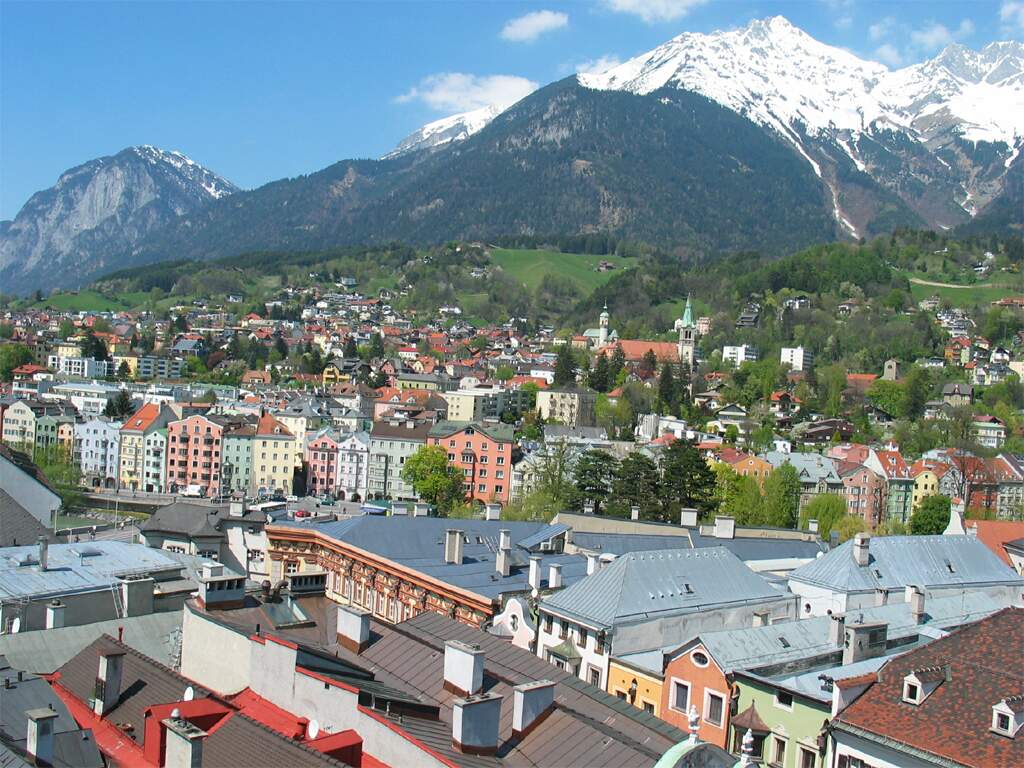


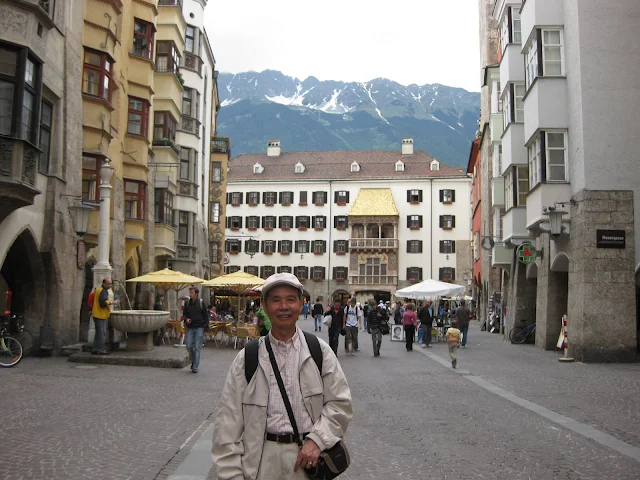


























No comments:
Post a Comment